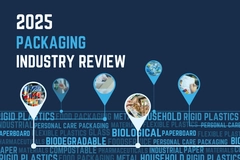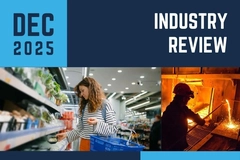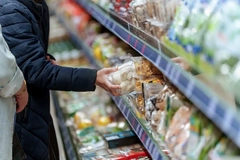
- Industry news
Industry news
- Category news
- Reports
- Key trends
- Multimedia
Multimedia
- Journal
- Events
- Suppliers
- Home
- Industry news
Industry news
- Category news
- Reports
- Key trends
- Multimedia
Multimedia
- Events
- Suppliers
Council adopts PPWR for European packaging life cycle improvements

The Council formally adopted the Packaging and Packaging Waste Regulation (PPWR). The new rules will significantly reduce the generation of packaging waste by setting binding reuse targets, restricting certain types of single-use packaging and requiring economic operators to minimize the packaging used.
The regulation covers the full life cycle of packaging. A Council spokesperson tells Packaging Insights that PPWR will first be signed by the Council and European Parliament (EP) on December 19 and will be published approximately 20 days after signature.
“It will then enter into force, which may happen in January or February. Then it will start to apply 18 months after this date,” the spokesperson tells us.
The formal adoption by the Council marks the final step in the ordinary legislative procedure and the regulation will now be published in the EU’s Official Journal.
Regulation requirements
The Council did not alter the text that had previously been agreed on with the EP.
“The Council signed off on the agreed text with the EP during informal negotiations and after lawyer-linguists’ revision. When this revision was over, the EP approved its position and the Council formally adopted the regulation identical to the EP’s position,” explains the spokesperson.
According to the Council’s press release, the new rules comprise, among others, the following requirements for packaging:
- 2030 and 2040 targets for a minimum percentage of recycled content (up to 65% for single-use plastic bottles by 2040).
- Minimizing the weight and volume of packaging and avoiding unnecessary packaging.
- Minimizing substances of concern, including restricting placing on the market food contact.
- Packaging containing per- and polyfluorinated alkyl substances (PFAS) if they exceed certain thresholds.
Meanwhile, labeling, marking and information requirements (for example, on material composition or recycled content) should facilitate consumer sorting and consumer choices.
Single-use restrictions
The new rules introduce restrictions on single-use plastic packaging for pre-packed fruit and vegetables of less than 1.5 kg and for F&B filled and consumed within hotels, bars and restaurants.
Restrictions furthermore apply to individual portions of condiments, sauces, milk creamer and sugar in hotels, bars and restaurants.
Meanwhile, single-use plastic packaging for small, single-use cosmetic and toiletry products used in the accommodation sector, such as shampoo or body lotion bottles, will also be limited.
Finally, very lightweight plastic bags — those offered at markets for bulk groceries —- fall under the regulation’s restrictions.
The regulation also sets new binding reuse targets for 2030 and indicative targets for 2040. The targets vary depending on the type of packaging used by operators (for instance, binding targets of 40% for transport and sales packaging and 10% for grouped packaging).
According to the new rules, take-away businesses must offer customers the option of bringing their own containers to be filled with cold or hot beverages or ready-prepared food, at no additional charge.









